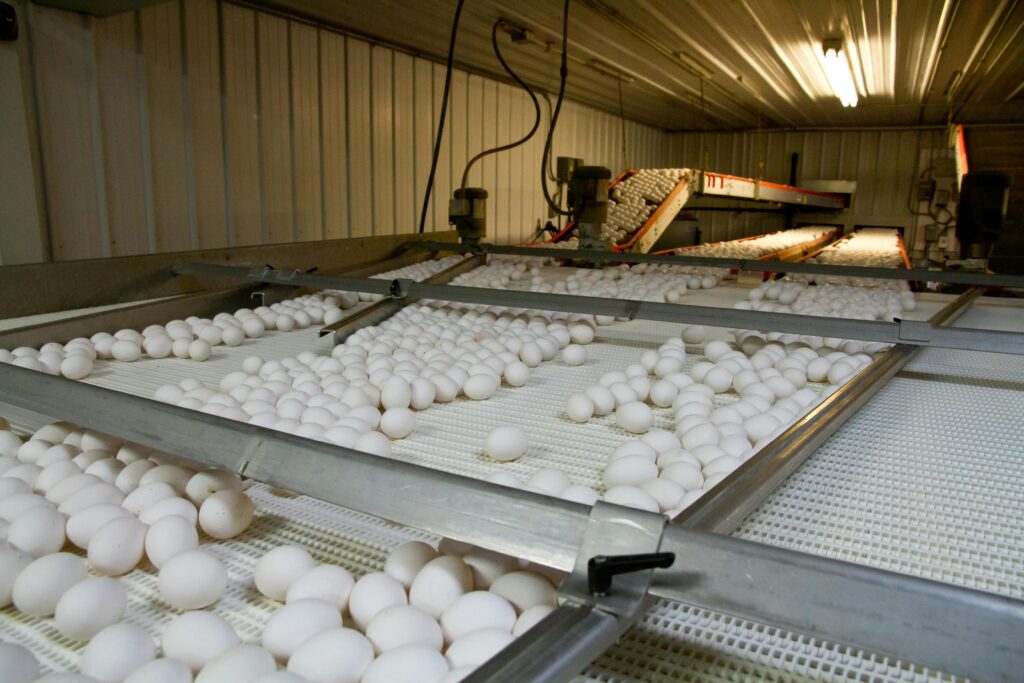
How Companies Are Merging Environmental Responsibility with Technological Progress to Create the Industries of Tomorrow
Innovation and Sustainability: The Inseparable Foundations of Modern Industry
In today’s rapidly evolving business landscape, two forces have emerged as the twin pillars of industrial transformation: innovation and sustainability. Once considered separate pursuits, these concepts have become intrinsically linked in successful enterprises across all sectors. Companies leading the way have discovered that environmental responsibility isn’t just compatible with innovation—it actively drives it.

This powerful convergence is reshaping how industries operate, compete, and plan for the future. From manufacturing to technology, energy to consumer goods, the businesses that thrive are those that recognize sustainability challenges as catalysts for unprecedented innovation.
Why Innovation and Sustainability Have Become Inseparable
The connection between these two forces stems from several key factors that modern industries can no longer ignore:
Resource Constraints Drive Creative Solutions
As traditional resources become scarcer and more expensive, companies face a clear imperative: innovate or struggle. These constraints have sparked remarkable technological breakthroughs:
- Advanced materials that require fewer raw inputs
- Manufacturing processes that drastically reduce water and energy consumption
- Circular economy models that transform waste into valuable resources
- Digital technologies that maximize efficiency while minimizing environmental impact
The result: Solutions that deliver both ecological and economic benefits, proving that sustainability challenges often lead to the most valuable innovations.
Consumer Demands Are Shifting Markets
Today’s consumers increasingly make purchasing decisions based on environmental and social values:
- 73% of global consumers would definitely or probably change their consumption habits to reduce environmental impact
- 62% of Generation Z prefer to buy from sustainable brands
- 50% of consumers are willing to pay more for products with transparent, environmentally responsible supply chains
Companies responding to these demands aren’t just implementing superficial “green” marketing—they’re fundamentally reinventing their products, services, and business models.
Regulatory Landscapes Reward Forward Thinking
As governments worldwide implement stricter environmental standards, proactive companies gain competitive advantages:
- Early adopters of sustainable practices avoid costly compliance retrofitting
- Businesses that anticipate regulatory trends secure market leadership positions
- Organizations with strong environmental performance access preferential financing options
- Innovation-focused companies discover new revenue streams in sustainability-driven markets
This shifting regulatory environment doesn’t just penalize pollution—it actively rewards innovative approaches to environmental challenges.
Case Studies: Where Innovation Meets Sustainability
Manufacturing Sector Transformation
Traditional manufacturing has undergone remarkable evolution through sustainability-driven innovation:
Company Example: Industrial Excellence Corp.
- Developed AI-powered production systems that reduce energy consumption by 47%
- Implemented closed-loop water recycling, cutting water usage by 92%
- Created biomimetic product designs that reduce material inputs while increasing durability
- Built modular manufacturing lines that adapt to changing production needs with minimal waste
The result isn’t just reduced environmental impact—it’s a 23% increase in operational efficiency and 31% reduction in production costs.
Energy Industry Revolution
Perhaps nowhere is the innovation-sustainability connection more evident than in energy:
Company Example: NextGen Energy Solutions
- Pioneered advanced battery storage systems that make renewable energy more reliable
- Developed smart grid technologies that optimize energy distribution
- Created predictive maintenance systems that extend the life of renewable infrastructure
- Implemented blockchain-based energy trading platforms that maximize renewable usage
These innovations have accelerated the transition to clean energy while creating entirely new business opportunities and market segments.
Consumer Goods Reinvention
Everyday products are being reimagined through the innovation-sustainability lens:
Company Example: Conscious Consumer Products
- Engineered biodegradable packaging that outperforms traditional plastics
- Developed plant-based alternatives to petroleum-derived ingredients
- Created concentrated product formulations that reduce shipping emissions by 60%
- Implemented blockchain tracking systems for transparent supply chain verification
These innovations haven’t just reduced environmental impact—they’ve created premium product categories that command higher prices and consumer loyalty.
The Four Principles of Sustainable Innovation
Companies successfully navigating this new landscape follow these core principles:
1. Integrate Sustainability into Innovation Processes
Rather than treating sustainability as a separate department or afterthought, leading companies:
- Include environmental criteria in all R&D project evaluations
- Train innovation teams in sustainability principles and measurements
- Set specific sustainability targets for innovation portfolios
- Reward cross-functional teams that achieve both innovation and sustainability goals
This integration ensures that environmental considerations shape innovations from conception rather than being addressed later.
2. Embrace Systems Thinking
Sustainable innovation requires looking beyond immediate products to entire systems:
- Consider full product lifecycles from raw materials to end-of-life
- Analyze broader ecosystem impacts beyond direct operations
- Engage with suppliers, customers, and even competitors on shared challenges
- Address both technological and behavioral dimensions of sustainability
This comprehensive perspective reveals opportunities that narrower approaches miss.
3. Prioritize Measurement and Transparency
What gets measured gets managed—and improved:
- Implement robust environmental impact metrics for all products and operations
- Conduct regular lifecycle assessments to identify improvement opportunities
- Share sustainability data transparently with stakeholders
- Use advanced analytics to connect environmental performance with business outcomes
This data-driven approach ensures sustainability efforts deliver measurable results rather than just good intentions.
4. Foster Collaborative Innovation
The most powerful sustainable innovations often emerge from collaboration:
- Partner with universities and research institutions on breakthrough technologies
- Engage with startups developing complementary solutions
- Participate in industry consortia addressing shared sustainability challenges
- Co-create with customers to understand their sustainability priorities
These partnerships accelerate progress by combining diverse expertise and resources.
The Business Case for Sustainable Innovation
For skeptics who still view sustainability as merely a cost center, the evidence presents a compelling counter-narrative:
Superior Financial Performance
Companies leading in both sustainability and innovation consistently outperform peers:
- 43% higher stock price performance over a six-year period
- 18% higher return on investment for sustainability-focused innovation projects
- 4.7x higher valuation-to-earnings ratios for sustainability leaders
- 2.3x more likely to be recognized as innovation leaders in their industries
Risk Reduction Benefits
Sustainable innovation provides powerful insulation against emerging threats:
- Reduced exposure to resource price volatility
- Lower regulatory compliance risks
- Decreased vulnerability to supply chain disruptions
- Minimized reputation risks from environmental controversies
Enhanced Talent Attraction and Retention
In the competition for top talent, sustainable innovators hold a decisive advantage:
- 76% of millennials consider a company’s environmental commitments when deciding where to work
- Employees at sustainability-focused companies report 25% higher engagement
- Innovation teams with sustainability mandates demonstrate 37% higher retention rates
- Job applicants are willing to accept 10% lower salaries to work for environmentally responsible organizations
How to Start Your Sustainable Innovation Journey
For organizations looking to strengthen the connection between innovation and sustainability, these steps provide a practical roadmap:
1. Conduct a Sustainability-Innovation Audit
Begin by assessing your current state:
- Evaluate existing products and services through a sustainability lens
- Identify innovation processes where environmental criteria could be integrated
- Benchmark against industry leaders and competitors
- Determine your biggest sustainability impacts and innovation opportunities
2. Build Internal Capacity
Develop the skills and structures needed for success:
- Train innovation teams in sustainability principles and measurements
- Create cross-functional sustainability-innovation task forces
- Establish clear metrics and goals that connect environmental and business outcomes
- Implement incentive structures that reward sustainable innovation
3. Launch Strategic Pilot Projects
Start with high-potential opportunities:
- Identify products or processes with significant environmental impacts
- Select projects with clear business benefits alongside sustainability improvements
- Ensure sufficient resources and executive support
- Establish rigorous measurement frameworks to track results
4. Scale Successful Approaches
Once pilots demonstrate success:
- Incorporate lessons learned into standard innovation processes
- Expand successful initiatives across product lines and divisions
- Communicate results internally and externally
- Continually raise ambition levels based on achievements
The Future of Industrial Success: Innovation Driven by Sustainability
The evidence is clear: in today’s business environment, innovation and sustainability are not competing priorities but mutually reinforcing imperatives. Companies that recognize this connection gain powerful advantages in efficiency, market position, talent attraction, and long-term resilience.
The most successful organizations have moved beyond asking whether they can afford to pursue sustainable innovation to recognizing they cannot afford to ignore it. In doing so, they’re not just reducing environmental impacts—they’re creating the foundation for lasting business success in a resource-constrained, environmentally conscious world.
Ready to transform your business through sustainable innovation? Our comprehensive “Innovation-Sustainability Integration System” provides the frameworks, tools, and strategies you need to turn environmental challenges into powerful business opportunities:
- Customized sustainability-innovation assessment tools
- Implementation roadmaps for different industry contexts
- Case studies and best practices from market leaders
- Workshop materials for executive and innovation team alignment
- Measurement frameworks to track both business and environmental outcomes
How is your organization connecting innovation with sustainability? Share your experiences or questions in the comments below!MelhorarExplicar